
FR
/
EN
Introduction
-
Inspirations
-
Legends in love
-
Contemporary creations
-
Historic pieces
-
Visit
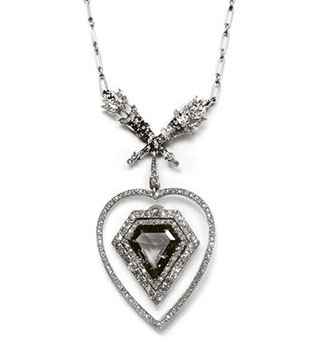
Bowknot corsage brooch, 1922
Gustave Flaubert, Sentimental education, 1869
« He loved her without a single
mental reservation, without any hope of his love
being reciprocated, unconditionally »
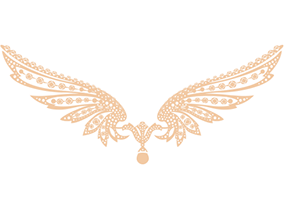
Inspirations

Choker with criss-crossed ribbons, circa 1905
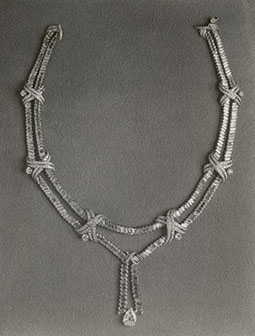
Necklace with criss-cross motifs, 1951
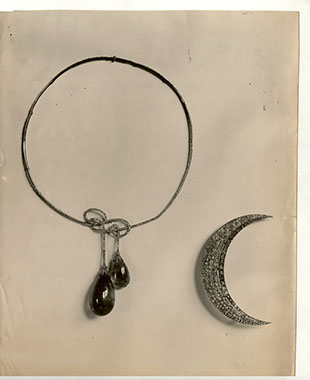
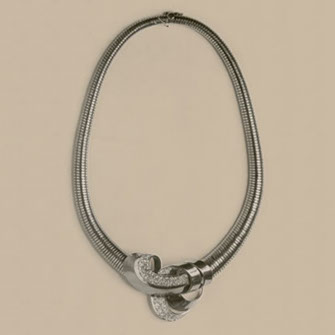
Necklace with négligé tie and moon crescent brooch, circa 1910
Tubogas necklace with knot motif, 1955
Mapping the affections
Une Éducation Sentimentale exposes the human heart at all stages of life, from the unconditional love between parent and child to fond friendships, the bonds of matrimony and all-consuming passion. In a palette of reds that glitters with romance and creative genius, this retrospective retelling of the Chaumet legacy of sentimental jewellery from the First Empire to the present day is illustrated by drawings and photographs, establishing Chaumet as a jeweller that has over the centuries found inspiration in emotion.
Bowknot corsage brooch, 1922
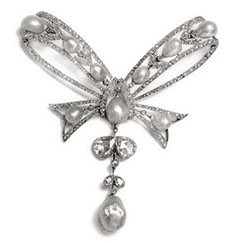


Arrow brooch and his negative on glass, 1905

Arrow brooch, 1920
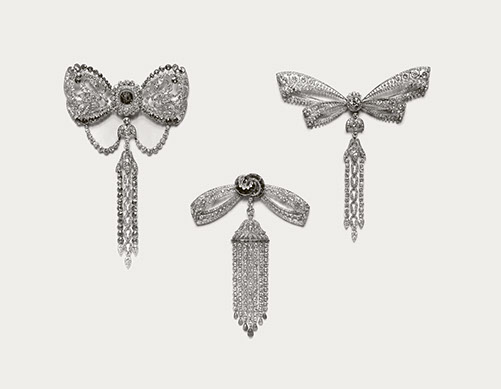
Bowknot corsage brooches, 1915
Top right: Heart pendant with Cupid’s arrow, quiver and torch motifs, 1906
Milestone moments
Chaumet, as a confidant of its clients’ personal lives, commemorates
milestone moments with precious keepsakes. Rites of passage are celebrated
with birth gifts, baptism charms, 18th birthday pearl necklaces, engagement
rings, wedding bands, tiaras, “morning gifts” - traditionally presented the
day after the wedding night - and anniversary presents. These special gifts
obey a cherished ritual, of which the presentation of the jewellery box is the
first step; customised, elegant, mysterious, it sparks the first emotion.
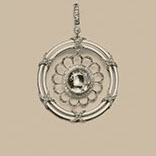
Medallion with
criss-cross motifs,
1909
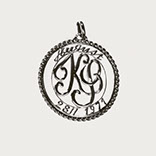
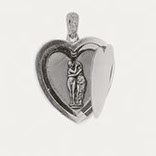
Heart medallion,
1916
Marriage medal,
1971
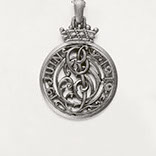
Marriage medal,
1919
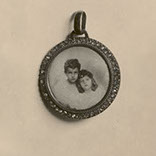
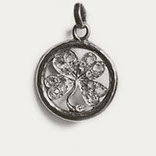
Clover medallion,
1940
Portrait medallion, 1933

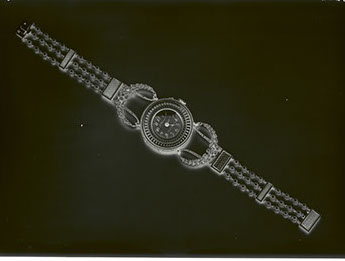
Forget-me-not motifs, 1908
Negative on glass of the above photograph

Openwork choker necklace, 1906
La corbeille de mariage:
Be my bride
Before the engagement ring, there was the corbeille de mariage. According to this French tradition, which dates back to the 1700s and continued well into the 20th century, a young man would present his betrothed with a basket or chest filled with jewellery, lace and other trinkets. This symbolic offering made the engagement official in the eyes of the wider community. In wealthy families, the groom’s parents and friends would make gifts of jewellery to the bride on the day of the signing of the marriage contract. These tiaras, corsage brooches, pearl necklaces and other statement pieces were displayed on a table or in a glass case and sometimes labelled with the name of the benefactor.
Corbeille de mariage of Princess Mercedes of Bourbon, wife of Infante Juan of Spain, son of King Alfonso XIII, 1935
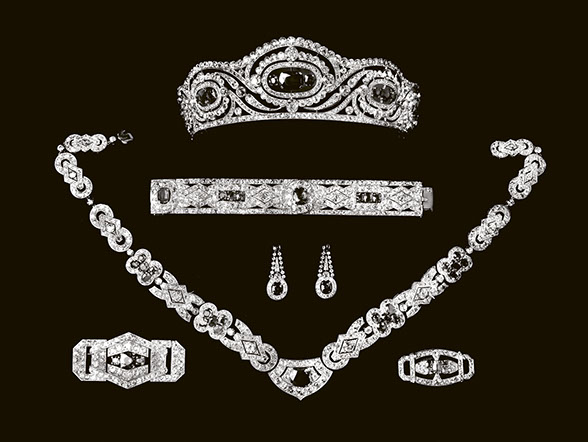
Sapphire and diamond set from the corbeille de mariage of Princess Alicia of Bourbon-Parma, wife of Infante Alfonso of Spain, 1936
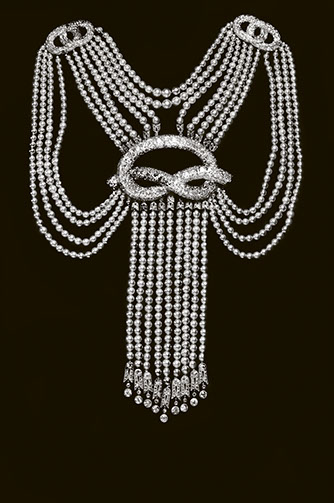
Pearl corsage brooch with knot motifs, 1913

NAPOLÉON TO JOSÉPHINE
1795
“I awake filled with you. Your portrait and the memory of the intoxicating evening have left my senses no respite.”
The tiara: Love’s crowning glory
The true predecessor of the engagement ring - which was historically to be treasured in private - was the tiara. For young ladies of noble birth, the tiara was the centrepiece of the corbeille de mariage. Brought back into fashion by Empress Joséphine, who wore a tiara for her coronation, the piece quickly became a status symbol for a young bride - and indeed for any lady who wished to sparkle with queen-like radiance at a ball, opera, social function or official ceremony. Since 1780, Chaumet has adorned heads with some 2,500 tiaras, ethereal aigrettes and geometric headbands. A symbol of happiness and prosperity, the tiara is the crowning glory of glittering parties and celebrations.
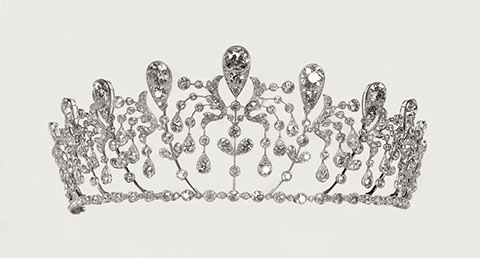
Fuchsia tiara know as Bourbon-Parme, 1919
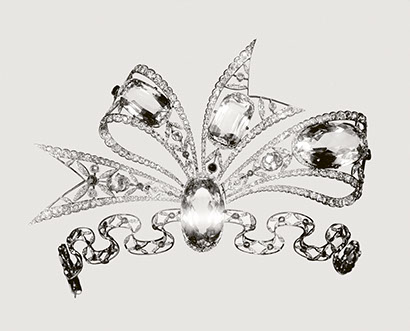
Bow and ribbons tiara, 1907
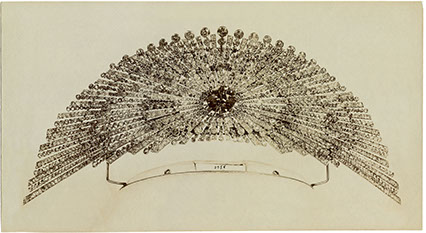
Princess Yusupov’s sun tiara, 1914
Wings of desire
Wings are the most striking motif in the Chaumet legacy of love tokens. The lofty hair ornaments that were fashionable in the Belle Époque seemed to scale the heights of the impossible. Powerful yet subtle, steeped in symbolism, the motif was inspired by the winged Roman deities Mercury and Minerva. Variously suggesting the frivolity of love, the serenity of virtue and the dutiful spouse, and the victory of love over destiny, these pieces were worn by ladies of character, freeing their spirits to soar on the wings of love.
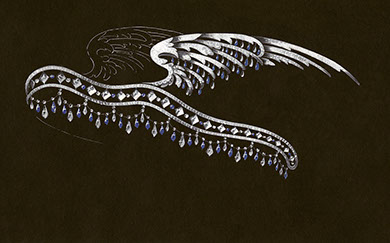
Drawing of the above bandeau
Winged bandeau, 1913

Gertrude Vanderbilt Whitney’s enamel and diamond wings aigrette, 1908
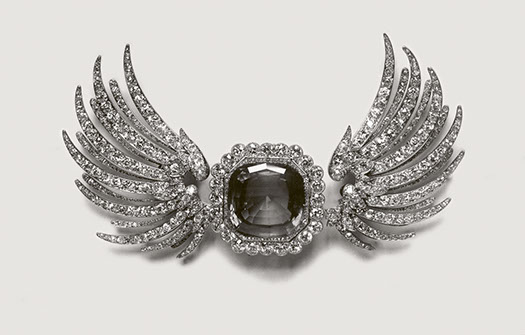
Aigrette, 1915
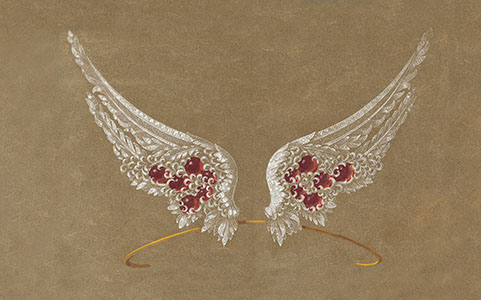
Drawing of an aigrette, circa 1890
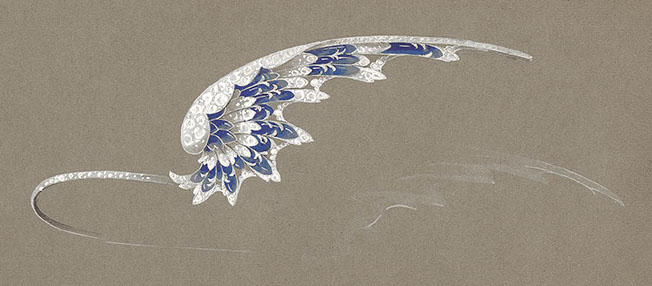
Drawing of a winged bandeau, circa 1910
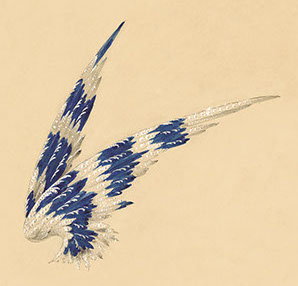
Drawing of Gertrude Vanderbilt Whitney’s wings aigrette, 1908
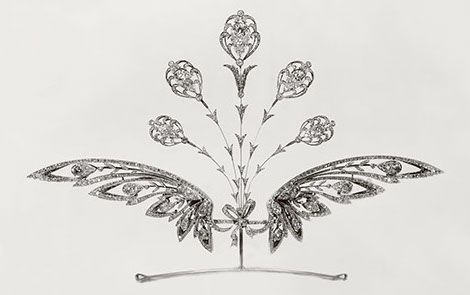
Aigrette, 1906
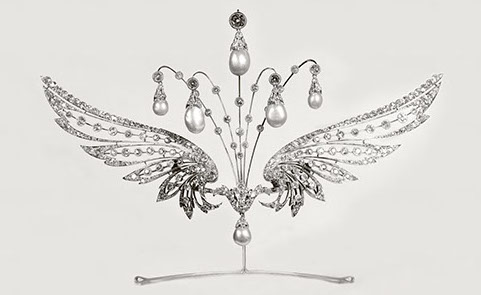
Aigrette, 1907
Download